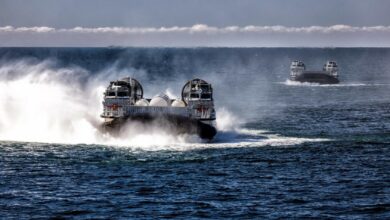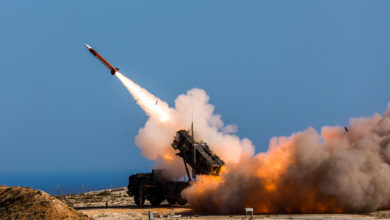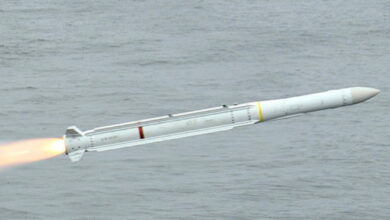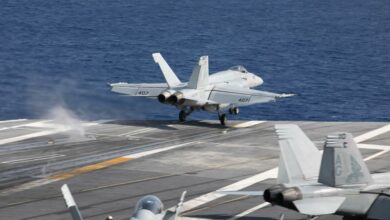US Navy to Upgrade All Surface Ships With SPY-6 Radar in $3B Program
The US Navy has awarded Raytheon Missiles & Defense a contract of up to $3.16 billion to install the SPY-6 family of radars on over 45 surface ships over the next five years.
The SPY-6 radar comes in various variants, with each radar consisting of individual “building blocks” called radar modular assemblies (RMAs). These self-contained radars come in 2’x2’x2’ boxes which could be stacked together to fit the ship’s mission requirements.
SPY-6 Variants
The large V1 is designed for the DDG 51 Flight III destroyer and comes with four arrays with 37 RMAs each. The first guided-missile destroyer in this class, the USS Jack H. Lucas, is already equipped with the SPY-6.
Similarly, the V4 variant — designed for the DDG 51 Flight IIA destroyer — has four arrays with 24 RMAs each.
Both the V1 and V4 are designed to detect cruise and ballistic missiles and for electronic warfare.
The much smaller V2, with one rotating array, will be installed on the amphibious assault ships and Nimitz-class carriers, while the V3 with three arrays is designed for the Ford-class aircraft carriers.

Scalable, Modular
“We can scale it for frigates and other classes of ships,” program area director for naval radars at Raytheon Missiles & Defense Scott Spence said. “And, we can add capabilities across all those platforms very seamlessly and quickly.”
Moreover, the radar’s common baseline software allows for easy future upgrades, without the need for new hardware.
Raytheon will deliver lifetime software upgrades to the SPY-6 family under a separate contract.
Greater Detection Range
According to Raytheon, the SPY-6 has a greater detection range than any radar currently deployed, which gives the sailors more time to react to threats, including from cruise and hypersonic weapons.
It also allows the sailors to correctly identify the threat “despite interferences such as sea noise.”
Capt. Jason Hall remarked last year that the “SPY-6 will fill critical mission gaps and enable precision operations in jammed and cluttered environments like never before.”
Meanwhile, naval power president at Raytheon Missiles & Defense, Kim Ernzen, likened the transition to “going from a pen light to a huge flashlight.”












